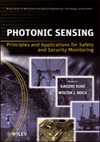A collaborative approach to neighborhood safety

Image via Unsplash
Collaboration between public and private sectors is often one of the biggest opportunities to enhance community safety. Many private businesses are already collecting vast amounts of data in their security systems. They frequently have cameras both in and around their facilities and monitor everything from criminal activity to patterns of behavior.
This video evidence can be a crucial tool in modern police investigations and aid in solving crimes. Yet retrieving video evidence from community businesses can be time-consuming. Manually tracking down and requesting footage from cameras located near the scene of an incident is inefficient. This process may slow down an investigation and take away time from solving a case.
One effective solution is to create a community connect camera registry program. This type of program dramatically reduces the amount of time it takes to identify and request video from private and public security systems.
How the program works
A community camera registry program enables closer collaboration between law enforcement, public entities, and private businesses. It empowers community members to participate in keeping their neighborhoods safe.
Businesses sign up for a community camera registry program at no cost to voluntarily share their camera locations and contact information with the police department. No additional hardware or software is required. Registration forms can be customized and embedded within an agency’s website to make it easy for citizens to participate.
With a camera registration program, the process of obtaining evidence is digital. There’s much less hassle. When the cameras are registered, they’re plotted on a map to help identify video resources. During an investigation, detectives can quickly find cameras near a crime site and email the owners to request the relevant footage. The camera owner then clicks on a secure link to upload the video to a secure, cloud-based portal. Police and other authorized personnel can view the evidence from any laptop, tablet, or mobile device.
The program can also complement tip lines. Using secure links, citizens voluntarily upload photo or video evidence from their phones using a QR code or web link to a secure platform. Anonymous submissions may be permitted to encourage people to share.
Privacy and public safety aren’t mutually exclusive
With the expansion of public-private partnerships and community programs, new concerns around privacy and cybersecurity often emerge. However, privacy and public safety can go hand in hand.
To collect and share the data collected by a camera registry program, agencies can use a digital evidence management system (DEMS) built with strong privacy and cybersecurity measures. Data is encrypted and kept confidential, viewable only by select users with the correct permissions. A full audit trail reveals who viewed, shared, or downloaded files to ensure the chain of evidence is clear.
There are several ways agencies can develop robust privacy standards while taking advantage of emerging technologies to improve public safety:
- Ensure personally identifiable information (PII) is only seen by authorized persons. Images of people on video recordings can be pixelated by default. If an operator sees an event happening, they can ask a supervisor to unlock the video. For sensitive data, some agencies require two supervisors to agree to authorize a request to access data.
- Communicate your privacy policy. Create, maintain, and share your policy with city officials and other stakeholders. The policy should outline what data is collected, how it’s stored, how long it’s stored, who can access this data, and under what circumstances.
- Look for vendors who develop tools that include privacy protection by design. These solutions give agencies complete control over their data so that they can adjust protection methods and processes to meet evolving regulations. The manufacturer or integrator can also help the agency configure the system to define who has access to sensitive data and footage without slowing down response times or investigations.
- Maintain strong cybersecurity standards. Protecting privacy means hardening the devices and networks on which PII resides. Some of the most common attack strategies take the form of spyware, ransomware, brute-force attacks, denial of service attacks, phishing, and others. Look for technologies designed to detect and defend against these threats.
Working together for safer communities
Bringing a community camera registry program to your community isn’t just about gaining quicker access to more sources of video evidence. It’s about working together to make their communities safer.
Law enforcement agencies and investigators spend less time driving around, knocking on doors, and transferring files to collect evidence. Instead, they can focus their time and attention on investigating cases and solving crimes.
Collaboration also builds trust and increases transparency. Citizens appreciate the opportunity to contribute to making their neighborhood safer, and public safety agencies build bridges with the public, increasing partnerships and cooperation.
Looking for a reprint of this article?
From high-res PDFs to custom plaques, order your copy today!




.jpg?height=200&t=1695998901&width=200)



